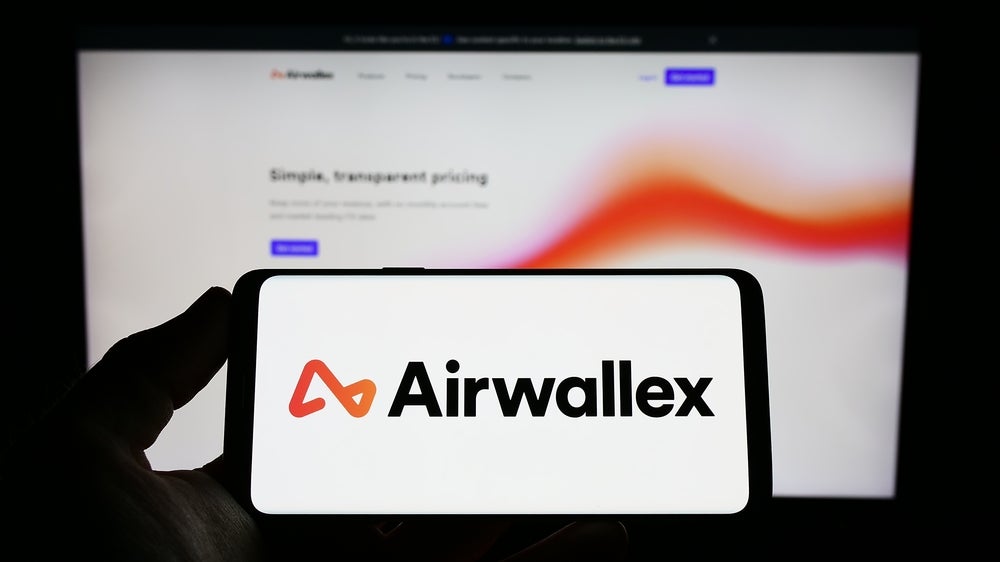implementation of the Single Euro Payments Area, delegates at Cards
International’s Cards & Payments Europe 2007 conference were
given an insight into how the payment landscape might look over the
next few years. Victoria Conroy reports from
Berlin.
The 20th annual Cards & Payments Europe conference, held in
Berlin at the end of May, fell at an auspicious time, given the
whirlwind of activity that has occurred in the payment industry
over the last few months. In just over six months’ time, the Single
Euro Payments Area (SEPA) will arrive, and will undoubtedly
transform Europe’s payment market. The theme of transformation
underscored most sessions at the conference, with SEPA being high
on the agenda, particularly at a time when the future of debit
cards is being widely discussed across Europe.
Delegates were keen to hear how the German market, especially,
would react to SEPA. Would Germany’s banks stick with the
widespread electronic cash (ec) scheme or would they migrate to the
international payment networks of MasterCard or Visa?
Joachim Fontaine, division manager of the Association of German
Banks (ZKA), dispelled any idea of a switch to international
schemes – for now. He told delegates that as yet, there is little
incentive to migrate to MasterCard’s Maestro or Visa’s V PAY
scheme, particularly since the ec scheme is already compliant with
the SEPA Cards Framework.
“Within the eurozone, there are more than 500 million debit and
credit cards, and one-third of those are German cards. Out of that
figure, the vast majority, or 90 percent, are debit cards. The ec
scheme is more efficient for banks and retailers and accounts for
the majority of domestic debit card transactions. It offers a much
cheaper service than the internationally branded schemes. Only
around 3 percent of German debit transactions take place outside
Germany, with most of those being Maestro transactions in the euro
area and the rest of Europe. Does it really make sense for us to
switch to an international scheme to cover the 0.01 percent of
Maestro transactions outside Europe?” he said.
“The German banking industry has to decide how to move forward
in SEPA. ec shall become a SEPA-compliant scheme and we do not need
to do much to achieve that. Today we have agreements between 2,500
banks, we have merchant agreements with standard issuer fees to be
paid by merchants, we have 25 network providers, and we have
governance through the associations who themselves are not involved
in transaction processing, and there are no geographic
limitations.”
How well do you really know your competitors?
Access the most comprehensive Company Profiles on the market, powered by GlobalData. Save hours of research. Gain competitive edge.

Thank you!
Your download email will arrive shortly
Not ready to buy yet? Download a free sample
We are confident about the unique quality of our Company Profiles. However, we want you to make the most beneficial decision for your business, so we offer a free sample that you can download by submitting the below form
By GlobalDataTo this end, ZKA and the German banks were intent on
strengthening the ec debit card system with bilateral and
multilateral agreements, as had taken place under the Euro Alliance
of Payment Schemes (see EAPS gains traction in European debit
space). Fontaine poured scorn on the idea that such alliances
would create a “mini-SEPA” but did not rule out the possibility of
co-branding with one of the international schemes at a later
stage.
He said: “We are taking a multi-stage approach to our
implementation strategy. First through the geographical opening of
ec in Germany; then through alliances with domestic schemes in
Europe; then finally there is an option to co-brand with V PAY or
Maestro. In Germany, there are 500,000 acceptance terminals for ec
with no card scheme fees. Outside Germany, there is an interesting
business case for acquirers, especially in countries where German
debit cards are used frequently. But not all German cards will
necessarily be co-branded with international schemes in the future.
There are many options for market players to participate in the ec
system directly or via bilateral and multilateral agreements.”
Balancing business with regulation
Another theme of the conference was the need to balance the
operational efficiency of national card schemes with regulatory and
legal requirements. David Stephenson, head of international affairs
for French bank card scheme Cartes Bancaires (CB), told delegates
that payment players need to meet the demands of self-regulation,
legislators, anti-trust bodies and oversight authorities, within
acceptable timeframes and while continuing to provide services to
members and clients.
In reference to the recently agreed-upon Payment Services
Directive (PSD) as applied to cards, Stephenson said that full
harmonisation was “unlikely to be achieved”, due to discrimination
in favour of “closed” payment systems, such as American Express and
private-label card programmes. Open systems, he said, must provide
payment institutions with access to the network infrastructures of
Visa, MasterCard, CB and so on. The PSD’s ambiguity and lack of
clarity was also a problem. “The PSD is a political decision – too
much choice is being left to national legislators. It will be
difficult to change national schemes until the PSD is transposed
into national law,” he said. “At the end of the day, card payments
are a business, and not a public utility.”
Niklas Bartelt, director of operations and services at Germany’s
DZ Bank, said that SEPA will bring about scheme concentration, but
survivors will have true European reach. However, per-transaction
revenues will on average decrease. The key issue, he said, is how
low they would go and what the consequences of that would be.
“Where will revenue per transaction converge – the lowest level or
the mean? The lowest level, or the ‘Trabant effect’, will mean that
cards and transactions will be perceived as a public good, and
there will be a focus on cost reduction. This will lead to a focus
on scale and standardisation, and in the end, a drive for a natural
monopoly. The mean, or the ‘BMW effect’, will see cards being
perceived as productive assets, and as an incentive for investment
and innovation. This leads to competition catering for needs of
different customer segments: cost, rational and emotional
value.”
In relation to interchange, he said: “Interchange will not be
abolished – if the so-called ‘war on cash’ is not just lip service
from regulators. Interchange fees are a key incentive for enhancing
debit card payments and increasing their competitiveness with cash.
If interchange fees are eliminated, there is no incentive for
issuers to increase or promote card usage and card usage costs will
not be covered unless it is charged to the customer directly. The
war on cash is in danger of being lost if interchange is lost – new
punitive charges will be attached to cash.”
Innovation and differentiation
With speculation swirling around the possible emergence of
bank-controlled debit payment network, there was scepticism about
its viability and whether it would be ready for the first SEPA
deadline of 1 January 2008. Most speakers were of the opinion that,
despite efforts by some banks in this area, it would not happen in
time. CB’s Stephenson said: “Some things are possible – but in this
case, it’s not.”
The theme of the conference then turned towards innovation and
differentiation in the European payment industry. Gian Bruno Mazzi,
managing director of Italian payment processor SIA-SSB,
examined the trends arising from the use of new technologies.
Increasing activism by regulators, payments players and SEPA are
putting pressure on the cards business – examples of external
change drivers included SEPA and the PSD, and multi-country
merchant demands, while internal change drivers included regulatory
and standards compliance, retaining and growing customer bases and
delivering new products and services.
“In terms of innovation, contactless might be a very important
opportunity. The major reaction of consumers to contactless is very
positive and they are willing to use it for bigger payments and not
just small amounts,” he said. “But consumers are still convinced
that cash is one of the most convenient payment methods. Cash
remains the enemy of card issuers, acquirers and banks. When
consumers use cards, they mostly use them at retailers or at the
POS. So innovation must be based on the very important role that
retailers and merchants have in the value chain of consumer
business.”
Mazzi added that there was good news for long-term card
profitability, as lifestyle changes are pushing up card usage.
Payment volumes would rise naturally by 2010 and additional uplift
is available by replacing cash with non-cash transactions. SEPA
would promise larger economies of scale, and banks could leverage
best practices and reduce the level of investment levels by means
of outsourcing solutions adoption at the pan-European level.
The continuing trend of payment processing consolidation was
also a key factor. The series of link-ups between automated
clearing house processors and card processors is accelerating.
This, Mazzi said, adds complexity to operations management, but
also allows larger economies of scale and value chain proposition
and revenues.
The usage of loyalty programmes is crucial to customer
acquisition and retention, as Michelle Geraghty, global solutions
leader at MasterCard Advisors, explained. “It’s important to
anticipate cardholder behaviour. Loyalty is not just about rewards
– it’s about rewarding the customer for profitable behaviour. We’re
seeing the emergence of multi-merchant coalition programmes, and
instant POS reward programmes. Rewards are becoming ubiquitous – in
the US, consumers are expecting reward programmes to come with
their cards.
“Is this happening in Europe? What we see is that rewards
cardholders spend twice as much as non-reward cardholders, and this
is happening in the US, Europe and Latin America. Rewards
cardholders also churn a lot less frequently than non-reward
cardholders. Rewards cardholders are also most likely to be
advocates of such programmes and promote them to friends and
family. We’re also seeing delivery of loyalty content to mobile
phones. Better use of customer data to create targeted campaigns
and more engagement with the merchants themselves are two other
trends that are emerging.”
The impact of non-banks
The impact of non-banks in the post-SEPA landscape is something
that many cards players are keeping a close eye on, particularly
when it comes to e-commerce. Jerry Dischler, senior product manager
at internet search giant Google, gave delegates an overview of the
company’s new payment product Google Checkout, which is expected to
garner a large share of the online payment market. He told
delegates that there is an opportunity to grow e-commerce by
improving checkout processes, given that around 63 percent of
online shopping carts are abandoned before the checkout stage.
The major factors to improve this were to streamline the
checkout process by reducing the number of steps required to make a
purchase; minimise the number of accounts needed, by allowing users
to buy from merchants across the web using a single log-in; and by
protecting personal information by shielding credit card details.
An integrated search, marketing and promotional campaign, combining
Google Checkout with the AdWords advertising programme, had helped
to drive more traffic and increase sales conversions at Google
merchants displaying the Checkout badge. Another factor was the
transaction processing rates – Google Checkout is charging 2
percent plus $0.20 per transaction in the US, and 1.5 percent plus
£0.15 ($0.29) in the UK, which is proving to be
competitive against payment card processing rates.
European payment players looking to grow transaction and card
volumes were left with the message that technology innovation,
enhanced data analysis and convergence of marketing and
segmentation would propel card usage in the consumer space.
Meanwhile, the industry is bracing for the advent of SEPA in
January, and the associated regulatory and operational challenges
and opportunities that will arise. It is certain that the Cards
& Payments Europe 2008 conference will be analysing a European
payment space which may look very different from the one that
exists today.








